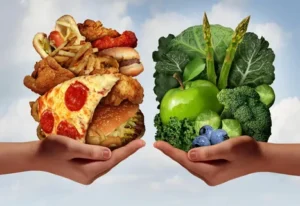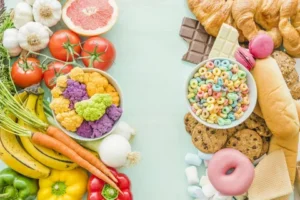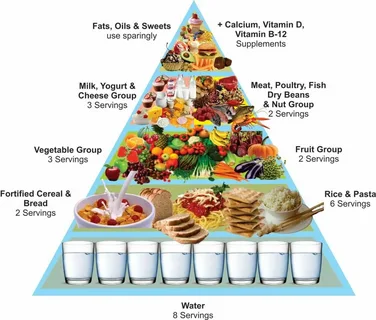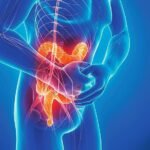Quick fix diets and fad foods comprise almost daily bombardment of convenience
Then, nutrition becomes the digestion and assimilation of foods for your body to absorb those nutrients necessary to execute its functions. These nutrients are either macronutrients, which consist of carbohydrates, proteins, and fats, or others grouped into the category of micronutrients, consisting of vitamins and minerals. In principle, all cells require them to carry out the normal functioning processes of your body-energy generation and tissue repairs.

Macronutrients are converted into energy
This is probably where your body will send the energy first; high in fruits, vegetables, whole grains
These provide building blocks and repair tissues; nearly all meats, eggs, legumes, and dairy
Power hormones and brain function; healthy fats are in nuts, seeds, avocados, and fish like salmon.
Though much smaller in quantity, amounts of micronutrients have to be applied as well. These vitamins and minerals do no less business; for example, Vitamin A, C, D, and minerals like calcium and iron. All of these perform functions that depend on the immune system, the health of bones, and red blood cells.
What Does It Mean?
Because of this, it has been described in more ways than not as not being about sticking onto diet restrictions or cutting certain types of food but more of a pattern of habits that nourish both the body and the mind in an assorted way. The most outstanding characteristics of healthy eating habits include the following:A Balanced Plate.
More food groups on your plate, with fewer portions in any one group. Half should be fruits and veggies. Another quarter will be proteins-chicken, fish, or beans. The last quarter is whole grains-brown rice, quinoa, for instance. And healthy fats: olive oil, avocado. Do have them, but in moderation.
Portion Control:
Understanding portion size is the most important understanding for a healthy body weight. Consuming more than required is always going to increase body weight, regardless of the kind of food being consumed. Always be cautious about portion sizes while dining out or purchasing ready-to-eat food products.
Eat at Intervals: This helps ensure stable levels of energy. Never skip meals, because skipping your meals may lead to overeating in other areas of the day. Eat on a regular schedule and have openings for healthy snacks if needed.
Nutrition and Healthy Eating.
Thus, overeating will be avoided and will also benefit the digestive process too. The best habit to be gained is that of not watching television or getting diverted at the time of meals because this habit tends to result in mindless eating most of the times.
Role of Fruit and Vegetables
So all will contribute positively towards health because the basic healthy diet from which fruits and vegetables arise is rich in vitamins, minerals, antioxidants, and fiber. Diet embraces a colorful variety of fruits and vegetables, keeps your immune system in good shape, and works towards the reduction of inflammation while allowing for healthy digestion.Eat colors as often as possible. Colors symbolize different types of nutrients. For example:
Orange and yellow, colored vegetables like carrots, sweet potatoes rich in Vitamin A
Leafy greens like spinach and kale rich in iron and calcium
Red fruits like tomatoes rich in antioxidants like lycopene
You must ensure that you take different types of fruits and vegetables so that your body becomes well-equipped with the nutrients so that it can enjoy good healthHydration: Don’t forget water.
Hydration also comes under the healthy-eating paradigm. In fact, 60% of the human body is made up of water. Hydration helps digest food, regulate body temperatures, transport of nutrients, and removal of waste. Some symptoms of dehydration are: fatigue; one is unable to focus; headaches.Generally, about 8 glasses per day or 2 liters is what usually prescribed but every one is different in his activity, climate condition, and age. Fluids that should be given first priority are indeed water, but liquids like herbal teas or those water-rich food items, fruits and vegetables can also help in achieving the amount of fluid that one’s body needs for the whole day.
Nutrition and Healthy Eating on Your Energy and Mood

Gradual energy:
Limit intake of processed foods
Probably the simplest way to be healthier about food is to remove most of the processed and junk foods. Of course, such types of food have unhealthy fats, added sugars, and excess sodium. They therefore promote weight gain, hypertension, and increases in risks for chronic diseases, particularly heart disease and diabetes.It should be on the entire prepared-to-eat foods: lean meats, vegetables, whole grains, and fruits. They consist of nutrients, therefore, for every calorie counted, they supply a high number of nutrients.
The Case for Cooking at Home
Conclusion:
Formation of Sustainable Healthy Eating Behaviours
Eating a healthy diet provides an improvement in your health, higher energy levels, and avoidance of chronic diseases. Balancing your meal with mindful eating and proper hydration makes healthy habits last for much longer.It has absolutely nothing to do with perfection;
FAQs
How do I begin to eat healthier?
What motivators do I need to be healthy?
Set achievable goals concerning how good healthy food could make you feel. Healthy habits can quickly get out of hand without prep and meal planning in place.
What are some junk food alternatives?
Air-popped popcorn replaces chips, fresh fruit candies, and sparkling water or herbal teas replace soda
How much protein would you need daily?
Although protein intake will vary based on age, level of activity, and intensity of exercises, an approximate common rule of thumb is 0.8 grams of protein per kilogram of body weight.


